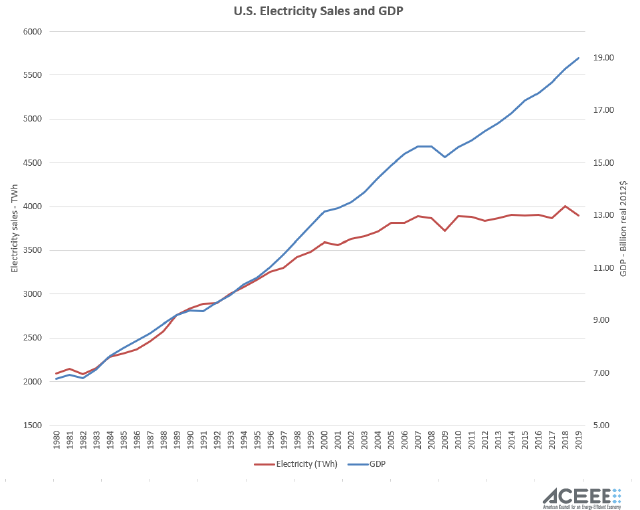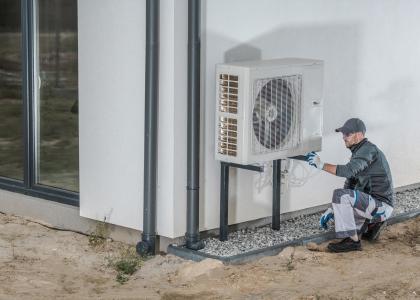U.S. electricity sales last year were similar to 2017, indicating the significantly higher 2018 sales were an anomaly. The Energy Information Administration, which recently released these data, attributes the 2018 jump largely to colder winters and a hot summer. These data predate COVID-19, and we expect a drop in 2020 electricity sales when new data are released at this time next year.
Source: EIA March 2020 Monthly Energy Review; BEA for 2019 GDP
The 2019 data continue a trend of essentially flat electricity use since 2007, even while the economy and population have grown significantly. This stretch is in marked contrast to the 1980–2006 period, when electricity use grew substantially, first paralleling economic growth before falling below it.
The change between these periods is because of many factors, but previous ACEEE analysis finds that increasing energy efficiency is a major contributor, allowing more work to be done with less energy. The rapid shift to more-efficient lighting in homes and commercial buildings has been a key factor, and more-efficient air conditioners and electronics have helped as well. Policies, including updated appliance and equipment standards, utility energy efficiency programs, and strengthened building energy codes, all played a role.
More data and information about energy efficiency impacts are available in the Energy Efficiency Impact Report released in December.





